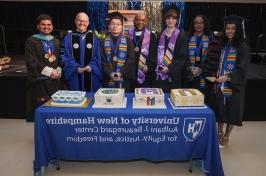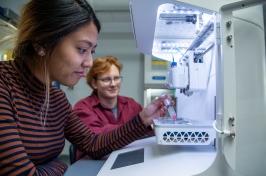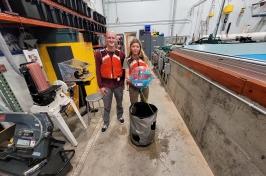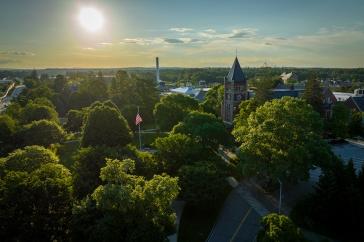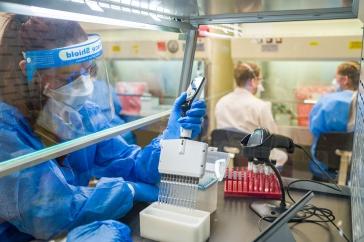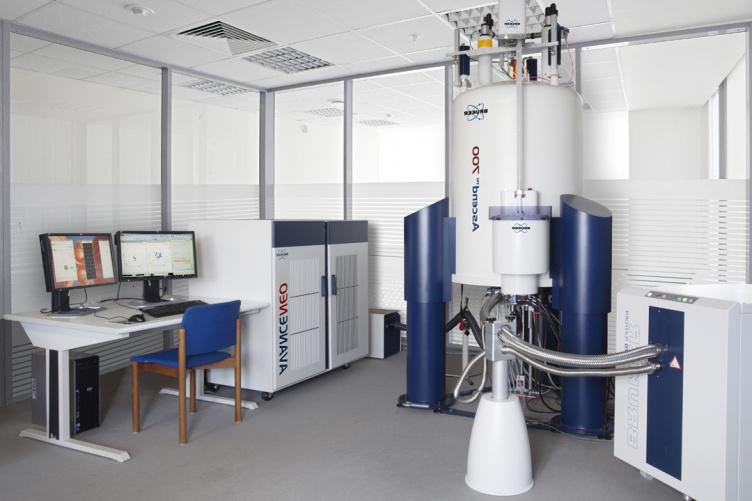
The University of New Hampshire is set to receive a multimillion-dollar nuclear magnetic resonance (NMR) spectrometer, which will significantly enhance the university’s research capabilities and establish a regional NMR facility in northern New England. 最先进的仪器看起来像1,500加仑的水箱加了类固醇, but the nondescript exterior belies an impressive apparatus capable of spurring significant advances impacting human health.
The new high-field 700 MHz NMR spectrometer will benefit at least 18 interdisciplinary research groups at 主要研究 and support research programs at 14 other colleges and universities throughout New Hampshire, Maine and Vermont — a region that has been historically underrepresented in federal funding for research. Scientists at other institutions across the country will also be able to access the instrument through remote login.
核磁共振波谱使用类似于磁共振成像(MRI)的技术。. 而核磁共振成像最常用于医学领域, NMR spectroscopy is widely used to understand the structure and motion of molecules and analyze complex chemical and biological systems. The knowledge gained inspires innovations in the applied fields of biotechnology 化学, 医学, and drug discovery —including how to produce more effective drugs and drugs with fewer side effects.
“主要研究 researchers and the regional scientific community will gain a competitive edge and develop nationally and internationally recognized research programs with the addition of this 700 MHz NMR,Krisztina Varga说, 大学助理教授 分子、细胞和生物医学科学系. 他们的研究现在将在校园内进行, thus significantly enhancing advanced training opportunities for doctoral and master’s degree students, 博士后研究人员, 和大学生, who will develop skills in modern instrumentation to advance their career aspirations and professional development in the workforce.”
仪器, 预计将于2019年7月抵达,并于初秋投入运营, 是由$1.6 million grant from the major research instrumentation program of the National Science Foundation, 学校还额外捐助了700美元,000美元的配对基金. Varga是这项资助的首席研究员, 和她一起的还有共同检察官里克·科特, 生物化学教授, Jeffrey Halpern, 大学助理教授 化学工程Samuel Pazicni,大学副教授 化学和化学工程助理教授Harish Vashisth.
帕特里夏·威尔金森, analytical instrumentation scientist at the University Instrumentation Center, 是否提供仪器的用户培训. She, along with Varga, will lead training workshops for graduate and undergraduate students.
Graduate students currently involved in computational analyses of model NMR datasets will now be able to translate these skills into first-hand acquisition and analyses of self-collected NMR data, and undergraduate students enrolled in courses such as Computational Molecular Bioengineering (BENG 755) will benefit from a visit to see the spectrometer and learn about its capabilities.
“We are all very excited for the acquisition of the new NMR spectrometer,” Halpern says. “I look forward to getting graduate and undergraduate students involved with using this new instrument in support of current laboratory projects. Students will gain a competitive edge in bioanalytical work because of the high sensitivity and versatility of this equipment.”
除了新的光谱仪, 主要研究’s existing 500 MHz NMR spectrometer will undergo a major upgrade funded by the university and an NIH COBRE: Center of Integrated Biomedical and Bioengineering 研究 (CIBBR) grant through an Institutional Development Award (IDeA) from the National Institute of General Medical Sciences.
An open house at the University Instrumentation Center will be announced in early fall to formally unveil the new spectrometer.
-
写的:
莎拉Schaier |生命科学与农业学院














